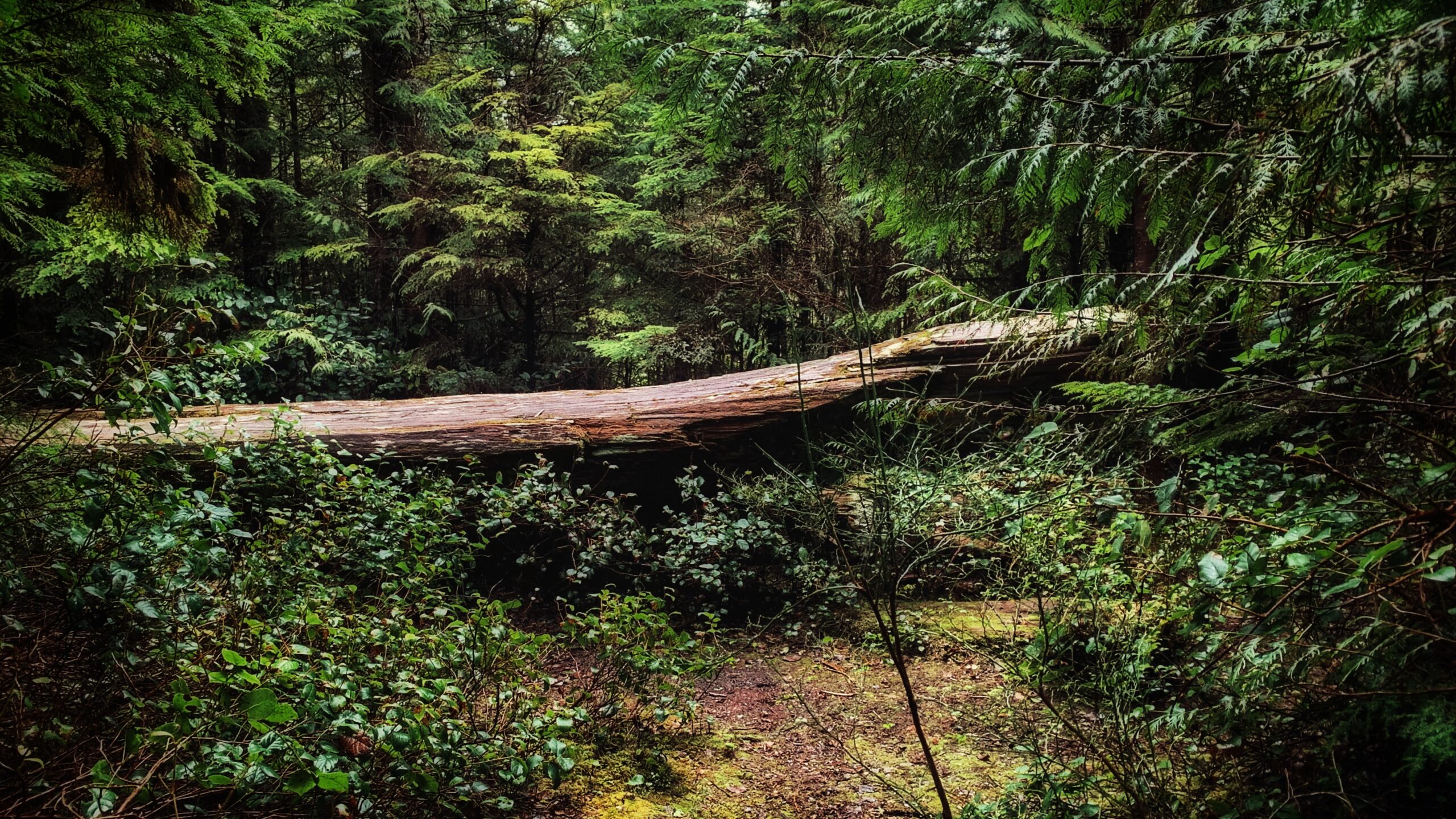ANCIENT HAIDA CANOE TRAIL FEATURE:
160 year-old Haida canoe
ABOUT
Realistically one doesn’t have to travel very far if one wishes to see a Haida canoe while visiting Haida Gwaii. There are a number of beautiful examples at the Haida Heritage Centre, for example, including Bill Reid’s famous “Lootas.” Reid’s “wave eater” was originally carved from a single red cedar for Expo ’86. But what if we desire to see something older, something that harkens back to an earlier time?
It is possible to see a “blank” (unfinished) Haida canoe not far from the community of Port Clements. To get to it, you must hike the aptly named “Haida Canoe Trail.” How do you get to it?
The Haida Canoe Trail is roughly 8km past the Golden Spruce Trail, along the Port Man Forest Service Road. You will notice a large sign that says “HAIDA CANOE” on the left side of the road, at the “Y” before the Port Man turns into the QC Mainline. The sign is impossible to miss and it points you in the direction of the ancient Haida canoe. We would not recommend driving up the old road leading to the trailhead. It is not maintained and is full of deadfall – rather large branches – strewn across sections of the road. Instead, we’d recommend simply parking on the side of the main road and walking towards the trailhead. If you’re worried about traffic getting by your vehicle – don’t be. The Forest Service Road in this area is sufficiently wide for traffic to pass safely.
The Haida Canoe Trail is a brisk 400 meters in length from the signed trailhead, though it’s probably closer to 700 meters if you include the section of old road outside the HAIDA CANOE sign. Regardless, it is an easy hike – less than 10 minutes one-way. Once you reach the “Canoe Trail” signage, the route is single-track but well-maintained. After a little over 5 minutes, the dense forest opens up to the unfinished ancient Haida canoe. This canoe, now surrounded by thick salal bushes, is estimated to be around 150 years old. It’s quite remarkable that, even after all this time, you can still make out the shaping of the canoe’s bow and stern along with the flattening of the top in preparation for its hollowing out via steam.
Beyond being able to view this fantastic artifact in real-time, we appreciate the story it tells. This canoe, and others like it (there are dozens in the forests around Haida Gwaii), is a powerful reminder of all that was lost when the smallpox epidemic hit the Islands in the early 1860s. It’s not hard to imagine the carvers of this canoe succumbing to the disease, resulting in its abandonment in the forest. In the contemporary period, one could also suggest that this canoe and the story behind it help to explain why the residents of Haida Gwaii fought so hard to keep visitors away during the early stages of the COVID pandemic. History can teach us much if we have but the eyes to see and ears to listen.
DIFFICULTY: Easy
TOTAL DISTANCE: 1.4 kilometers (return, to logging road)
TIME: 20 minutes
TYPE: Out-and-Back
ELEVATION GAIN: None





